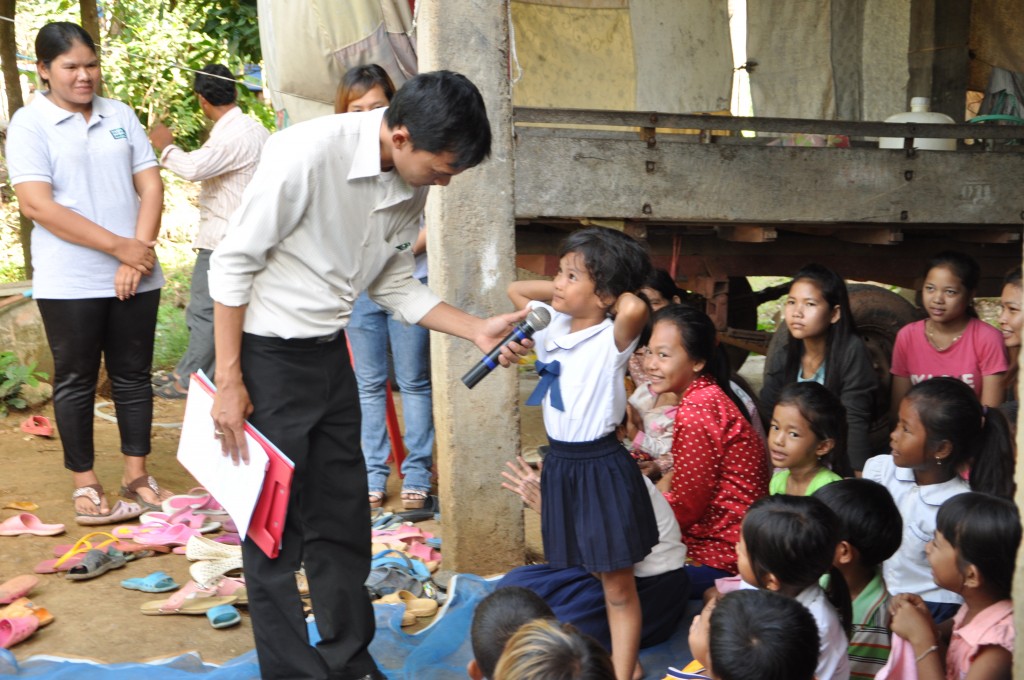Vanney Keo is a Malaria Consortium field assistant, who has been working in Cambodia.
I have been working for Malaria Consortium on a Regional Integrated Vector Management Project in Cambodia, where we have been collaborating closely with the National Dengue Control Programme (NDCP). At a project closing event in the Mongkol Borey district of Cambodia, many community members thanked me for my role in sharing best practices on how to prevent dengue fever. I thought then that I would share my experiences working on this project.
The purpose of the project was to develop community-based methods to improve prevention, recognition and reporting of dengue. The positive deviance (PD) focus of the project involved identifying community members who, despite sharing similar living conditions and resources as the rest of the community, already demonstrated positive behaviours for preventing dengue. These individuals were encouraged to share what they did to preserve their health with the rest of the community by becoming PD volunteers.
At the start of the project I helped to select 16 PD volunteers who were both willing and able to share methods for preventing dengue. This meant four volunteers for each selected village throughout the Banteay Meanchey province. As well as speaking at meetings and seminars, the volunteers visited each household in their allocated village at least twice a month. One benefit of using volunteers from the community to help raise awareness of disease prevention behaviours is that they are recognised in that community and can help to galvanise support for educational events.
It was my responsibility to schedule community meetings so that PD volunteers were able to give seminars on preventing dengue. Their prevention methods include advising individuals to sleep under a mosquito net, even during the daytime; always disposing of containers and cans which can accumulate water; keeping children away from areas with high concentrations of mosquitoes like the forest; wearing long-sleeve clothes, particularly in high-risk areas; using guppy fish in water containers to limit the growth of mosquito larvae; and highlighting the importance of cleanliness.
I kept in regular contact with the volunteers to ensure that their methods were being picked up by the community. By coordinating with the village members on a regular basis, I acted as a bridge between the volunteers and health specialists from NDCP and Malaria Consortium, and helped to monitor the changes in the behaviour of community members.
On one occasion, I helped to organise an event where the villagers were encouraged to create posters explaining the dengue prevention methods they had been taught by the PD volunteers.
One of our seminars was attended by the majority of community members across all four villages (Khtum Reay Keut, Anlong Thngan Keut, Bat Trang Thum Keut, and Bat Trang Touch). Competitions were organised in order to increase community participation, and involved quizzes for the community’s children, which aimed at increasing their understanding of dengue and the threat of mosquitoes.

Positive Deviance volunteers also used the opportunity of cross-community events to give speeches, encouraging community members to continue spreading the messages after the closing ceremony. One positive deviance volunteer said, “Now the households of our community are very clean, and I’m really happy that you have all followed our suggestions”.

These events, and the participation of community members, required the approval of respected leaders within the villages. This meant I frequently met with the village chiefs in order to provide updates on the project and to address any concerns. By the end of the project, I believe that we had successfully broken a cycle of dengue as all of the villagers were maintaining good standards of cleanliness in their home, and were always sleeping under a net. I’m confident these methods will continue now that the project has ended.

